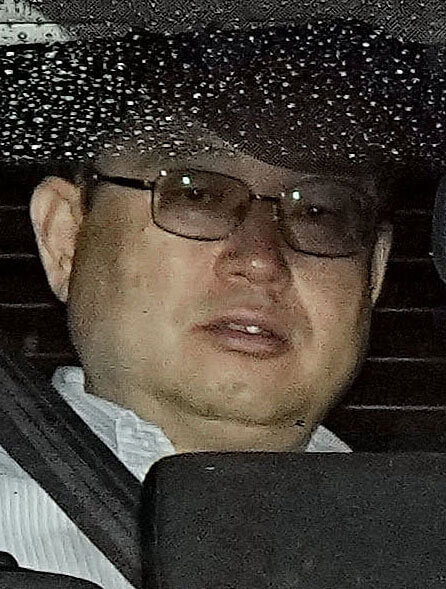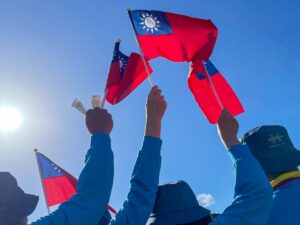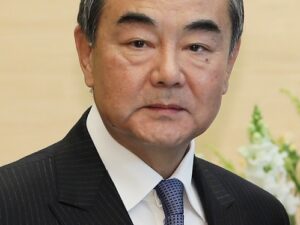
As the backbone of the suspect Gong Hengdao, 59, a Chinese national and senior researcher at the National Institute of Advanced Industrial Science and Technology (AIST) (Tsukuba City, Ibaraki Prefecture), who was arrested by the Public Safety Department of the Metropolitan Police Department on June 15, is becoming a growing concern among police officials.
The suspect was arrested in April 2018 for violating the Unfair Competition Prevention Law (disclosure of trade secrets) by leaking the results of research Gong was conducting at AIST to a Chinese company. However, as the investigation progresses, “deep ties” between the suspect and the Chinese side are being revealed one after another.
The information was leaked to U, a chemical products manufacturing company headquartered in Beijing, which had received an e-mail from the suspect regarding research data on the generation of fluorine compounds used in the production of “insulating gas” and other products. Approximately one week after receiving the e-mail, U filed a patent application in China, naming the suspects as inventors. The contents of the application were very similar to the research data, and U Corp. subsequently obtained the patent,” said a reporter from the Metropolitan Police Department of a national newspaper.
The company’s Japanese distributor is located in Tsukuba City and is headed by the suspect’s wife. According to the agency’s corporate registration, it was established in 2012, and in January 2010, the business purpose was added to include “development, manufacture, sale, and import/export of fluorochemicals,” “various gases,” and other items. We asked the agency for an interview, but they hung up the phone and said, “We don’t know.
Member of the “Thousand Man Project
In December 2006, he was appointed as a professor at Beijing University of Technology, known as the “Seven Schools of National Defense,” because of his alleged ties to the Chinese People’s Liberation Army. It is also known that he served as a director of U Corp. and its affiliated companies.
Subsequent investigations revealed that the suspect is believed to be a member of China’s “Thousand Man Program,” which invites outstanding foreign researchers to China.
Gong graduated from Nanjing University of Technology in 1984, which is also one of the Seven Schools of National Defense. In 2006, the suspect received an award for his research achievements at China’s National Science and Technology Convention, and a photo of him shaking hands with President Xi Jinping exists. The photo of him shaking hands with President Xi Jinping at that time also exists.
Since his arrest, Gong has denied the charges, saying that he did not think his work constituted a trade secret, but one person involved in the investigation said, “Gong is a former employee of one of Japan’s most prestigious public research institutes.
One of the people involved in the investigation said, “It is unacceptable that a person who has a job at one of Japan’s leading public research institutions, and who makes full use of the facilities and environment in which he works, would secretly pass on the fruits (research data) of his research to his home country. We are investigating him with an eye to possible extra crimes.
AIST responded, “We cannot answer that question. Chinese Recruiter
The timing of Gong’s participation in the “Thousand Man Project” is not clear, but it is believed that he “became a member in 2010 or later after being hired by AIST” (reporter).
In fact, it is said that “Chinese recruiters” have established bases in Tsukuba City and other areas where Japanese research institutes are concentrated, soliciting participation in the “Plan for a Thousand” and other programs.
The purpose of the “1,000 Researcher Plan” is to invite outstanding foreign researchers to work on technological development at research institutes in China. We have heard for some time that there are recruiters who are calling on Chinese researchers and foreign students living in Japan to act as a direct “window” for recruiting talented Japanese researchers. It seems that the recruiters are calculating that they will be less likely to be cautious when recruiting researchers if they are members of the same research team as the researcher or foreign student.
Of course, if there are opportunities for Chinese researchers living in Japan to come into direct contact with cutting-edge technological information, they are encouraged to provide such information.
The “economic information war with China” has often been on the back foot, but momentum is now building for a breakthrough. The enactment of the Economic Security Promotion Law in August of last year was a key factor in this.
It goes without saying that China is the most alarming country in terms of economic security. Since last year, the relevant authorities have already been actively giving lectures to private companies on countermeasures and warnings, and at the same time, they have been asking companies that are likely to handle cutting-edge technologies if they have any suspicious cases. At the same time, they are also conducting behind-the-scenes investigations of companies that are likely to handle cutting-edge technology to “see if there are any suspicious cases. It is certain that this incident is just the tip of the iceberg, and we will be keeping a closer eye on them in the future.
Will the company be able to turn from the defensive to the offensive? There are high expectations for a turnaround.








